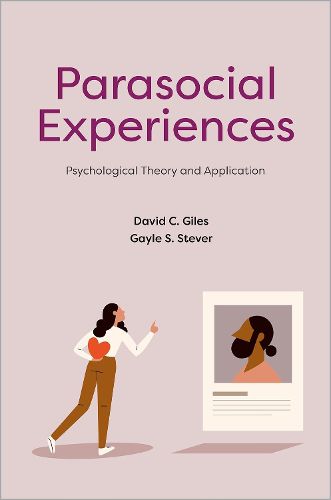Readings Newsletter
Become a Readings Member to make your shopping experience even easier.
Sign in or sign up for free!
You’re not far away from qualifying for FREE standard shipping within Australia
You’ve qualified for FREE standard shipping within Australia
The cart is loading…






This book covers key aspects of parasocial relationships (PSRs), or the relationships people have with media personalities, including fictional characters. The principal feature of a PSR is that it is not individually reciprocated although when the parasocial object is a real person, usually a celebrity, that celebrity often has a reciprocal relationship with their audience as a group.The authors begin by addressing the many instances where relationships exist in a gray area that is neither fully social and reciprocated nor parasocial and non-reciprocated. In describing parasocial experience, the authors address social relationships vs. parasocial relationships as a continuum rather than a dichotomy. They also discuss prominent theories in psychology and how they should be applied to parasocial theory, as well as psychoanalytic theory and the role of the unconscious in parasocial relationships. This is followed by chapters on applications of evolutionary psychology, attachment theory, and the effects of social media on PSRs, particularly a very new social media service, Cameo.Through a meaningful exploration of social theories as they influence parasocial experiences, this book unveils areas for future study and opens up pathways for new, more sophisticated research.
$9.00 standard shipping within Australia
FREE standard shipping within Australia for orders over $100.00
Express & International shipping calculated at checkout
This book covers key aspects of parasocial relationships (PSRs), or the relationships people have with media personalities, including fictional characters. The principal feature of a PSR is that it is not individually reciprocated although when the parasocial object is a real person, usually a celebrity, that celebrity often has a reciprocal relationship with their audience as a group.The authors begin by addressing the many instances where relationships exist in a gray area that is neither fully social and reciprocated nor parasocial and non-reciprocated. In describing parasocial experience, the authors address social relationships vs. parasocial relationships as a continuum rather than a dichotomy. They also discuss prominent theories in psychology and how they should be applied to parasocial theory, as well as psychoanalytic theory and the role of the unconscious in parasocial relationships. This is followed by chapters on applications of evolutionary psychology, attachment theory, and the effects of social media on PSRs, particularly a very new social media service, Cameo.Through a meaningful exploration of social theories as they influence parasocial experiences, this book unveils areas for future study and opens up pathways for new, more sophisticated research.